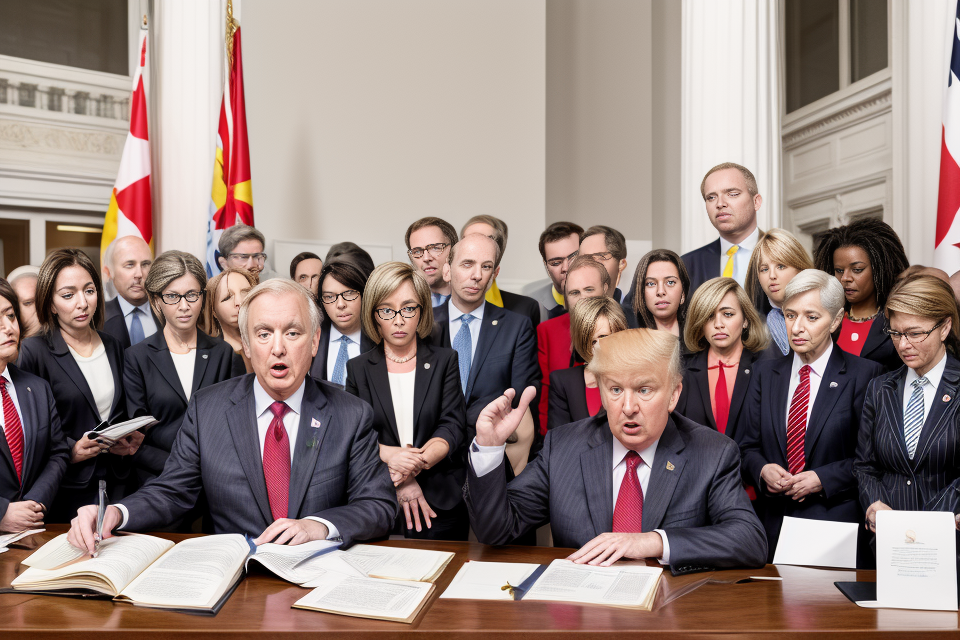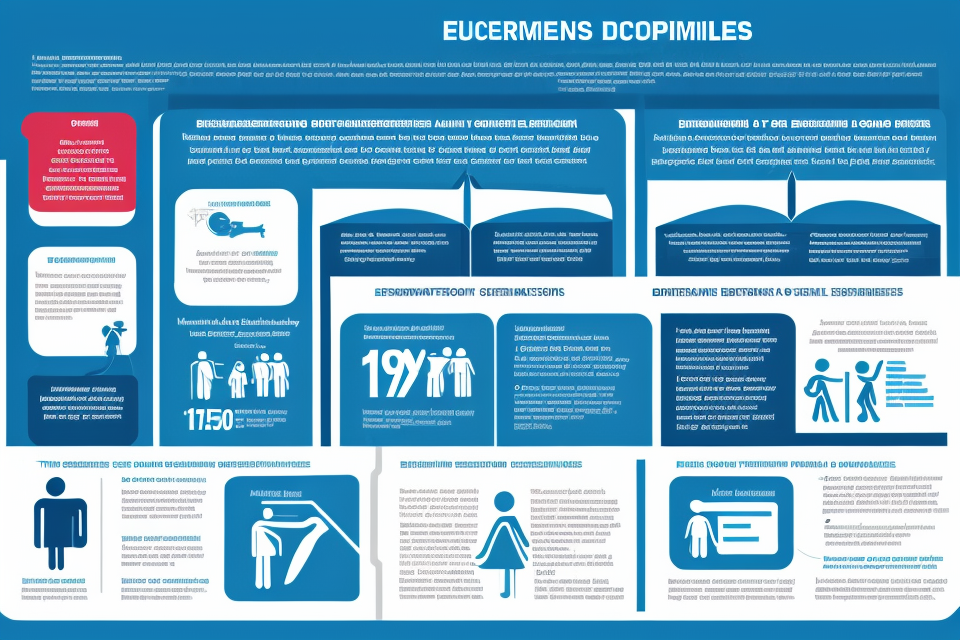
The Code of Federal Regulations (CFR) is a comprehensive set of rules and regulations that govern the operations of various federal agencies in the United States. The CFR is an essential tool for understanding the legal framework that underpins the work of these agencies. This overview of the CFR will provide a brief introduction to the regulations that govern the activities of federal agencies, and how they impact the daily lives of Americans. Whether you’re a business owner, a consumer, or simply interested in understanding the workings of the federal government, this overview will give you a solid foundation for further exploration of the CFR. So, let’s dive in and explore the world of federal regulations!
The CFR, or Code of Federal Regulations, is a collection of rules and regulations that are enforced by federal agencies in the United States. It is a comprehensive resource for understanding the regulations that govern the actions of federal agencies and the conduct of individuals and businesses that operate within their jurisdiction. The CFR covers a wide range of topics, including environmental protection, consumer protection, and financial regulation, among others. It is important for individuals and businesses to be familiar with the regulations contained in the CFR, as failure to comply with these regulations can result in penalties and legal consequences.
Introduction to the CFR
Brief history of the CFR
The Code of Federal Regulations (CFR) is a codification of the general and permanent rules and regulations (sometimes called administrative law) that are published in the Federal Register by the executive departments and agencies of the federal government of the United States. The CFR is divided into 50 titles that represent broad areas subject to federal regulation.
- Creation of the CFR: The CFR was first published in 1938, and it has been updated annually since then. The CFR is compiled and published by the Office of the Federal Register (OFR) of the National Archives and Records Administration (NARA).
- Purpose of the CFR: The primary purpose of the CFR is to provide a comprehensive and convenient source of information about the regulations that govern the activities of the federal government. The CFR is used by government officials, industry professionals, legal practitioners, and the general public to understand and comply with federal regulations. It is also used as a reference by courts and other government bodies in interpreting and enforcing regulations.
Structure of the CFR
The Code of Federal Regulations (CFR) is a comprehensive set of rules and regulations that govern various aspects of American life. It is organized into 50 titles, each of which represents a different federal agency. The CFR is updated annually and contains regulations that have been issued by federal agencies over the course of several years.
The CFR is structured in a hierarchical manner, with each title representing a different area of regulation. The first two digits of each title correspond to the agency responsible for issuing the regulations. For example, Title 26 is the Internal Revenue Code, which is issued by the Department of the Treasury.
Each title is further divided into chapters, which represent specific areas of regulation. Chapters are then divided into parts, which represent specific regulations. Each part is further divided into sections, which contain the specific requirements and procedures that must be followed.
The CFR is also organized by agency, with each agency having its own set of regulations within its respective title. For example, Title 21 covers food and drugs and is issued by the Food and Drug Administration (FDA). The FDA’s regulations are organized into chapters, which cover specific areas such as food labeling, drug approval, and medical devices.
Overall, the structure of the CFR is designed to provide a clear and organized framework for federal regulations, making it easier for individuals and businesses to understand and comply with the law.
CFR vs. other regulations
Comparing the CFR to other regulatory bodies
When comparing the CFR to other regulatory bodies, it is important to understand the similarities and differences between them.
Similarities between the CFR and other regulations
One of the main similarities between the CFR and other regulatory bodies is that they all aim to provide a framework for organizations to follow in order to ensure compliance with relevant laws and regulations. Additionally, many regulatory bodies have similar requirements for record keeping, reporting, and documentation.
Another similarity is that all regulatory bodies have the goal of protecting the public interest. Whether it is consumer protection, environmental protection, or financial stability, each regulatory body is tasked with ensuring that organizations operate in a way that benefits society as a whole.
Differences between the CFR and other regulations
Despite these similarities, there are also some key differences between the CFR and other regulatory bodies. One of the main differences is the scope of their regulations. While the CFR covers a wide range of industries and activities, other regulatory bodies may focus on a specific sector or area of concern.
Another difference is the level of detail provided in the regulations. The CFR is known for its comprehensive and detailed regulations, while other regulatory bodies may provide more general guidance or leave more room for interpretation.
Finally, the CFR is unique in its use of numbered codes to reference specific regulations. This makes it easier for organizations to find and understand the specific requirements that apply to them. Other regulatory bodies may use different systems for referencing their regulations, or may not provide numbered codes at all.
CFR compliance
Why compliance is important
- Legal and financial consequences of non-compliance
The Code of Federal Regulations (CFR) is a collection of regulations that governs various aspects of American life, from commerce to healthcare. Compliance with the CFR is essential for businesses and individuals alike, as failure to comply can result in severe legal and financial consequences.
- Benefits of compliance
Compliance with the CFR can bring many benefits to businesses and individuals. For businesses, compliance can lead to increased credibility and a better reputation with customers and partners. It can also help to prevent legal and financial troubles down the road. For individuals, compliance can lead to increased job opportunities and better treatment by law enforcement and other government agencies.
In conclusion, compliance with the CFR is crucial for both businesses and individuals. Failure to comply can result in severe legal and financial consequences, while compliance can bring many benefits.
How to comply with CFR regulations
- Understanding the specific regulations that apply to your business or industry
Compliance with the Code of Federal Regulations (CFR) is essential for businesses to ensure they are operating within the legal boundaries set by the federal government. To comply with CFR regulations, businesses must first understand the specific regulations that apply to their industry. This involves researching and identifying the relevant CFR sections that are applicable to their operations.
- Hiring a compliance expert or consulting with a legal professional
For businesses that may find it challenging to navigate the complexities of CFR regulations, hiring a compliance expert or consulting with a legal professional can be beneficial. These experts have a deep understanding of the CFR and can provide guidance on how to comply with the regulations. They can also help businesses to identify potential areas of non-compliance and develop strategies to address them.
Additionally, working with a legal professional can provide businesses with access to a wide range of resources and tools to help them stay up-to-date with changes to the CFR. This can include subscriptions to regulatory newsletters, access to online databases, and regular updates on new regulations and enforcement actions.
In summary, complying with CFR regulations requires businesses to understand the specific regulations that apply to their industry and either develop the necessary expertise in-house or seek the help of a compliance expert or legal professional.
CFR enforcement
How the CFR is enforced
Responsibility for enforcing CFR regulations
The responsibility for enforcing the Code of Federal Regulations (CFR) lies primarily with the individual federal agencies that are responsible for creating and implementing the regulations. These agencies are responsible for ensuring that their regulations are enforced in a consistent and effective manner.
Common methods of enforcement
There are several common methods of enforcing the CFR regulations, including:
- Civil penalties: Civil penalties may be imposed for violations of the CFR regulations. These penalties may include fines, suspension or revocation of licenses, or other forms of punishment.
- Criminal prosecution: In some cases, violations of the CFR regulations may be prosecuted as criminal offenses. This is typically reserved for more serious violations, such as those that pose a significant risk to public safety or the environment.
- Informal resolution: In many cases, violations of the CFR regulations can be resolved through informal means, such as through negotiation or mediation. This can be a more efficient and cost-effective way to resolve disputes, and can help to maintain positive relationships between regulated entities and the federal government.
- Compliance programs: Many federal agencies have established compliance programs to help regulated entities understand and comply with the CFR regulations. These programs may include training, education, and technical assistance, as well as enforcement tools such as audits and inspections.
Overall, the enforcement of the CFR regulations is a critical component of ensuring that federal agencies are able to carry out their missions effectively and efficiently. By holding regulated entities accountable for their actions, the federal government can help to ensure that the CFR regulations are followed, and that the public’s health, safety, and well-being are protected.
Consequences of non-compliance
- Fines and penalties for non-compliance
- Failure to comply with CFR regulations can result in the imposition of fines and penalties by the relevant regulatory agency.
- The amount of the fine or penalty will depend on the severity of the violation and the specific regulations that were violated.
- Repeat violations or willful disregard for the regulations can result in more severe penalties.
- Legal action that may be taken against businesses or individuals who violate CFR regulations
- In addition to fines and penalties, businesses or individuals who violate CFR regulations may also face legal action.
- This can include lawsuits filed by the government or private parties, as well as criminal charges for more serious violations.
- Legal action can result in significant financial penalties, damage to reputation, and other consequences for those found to be in violation of the regulations.
Overall, non-compliance with CFR regulations can have serious consequences for businesses and individuals, including fines, penalties, and legal action. It is important to understand and comply with the regulations to avoid these consequences and ensure the safety and well-being of consumers and the environment.
Future of the CFR
Potential changes to the CFR
Current proposals for updating the CFR
There are currently several proposals aimed at updating the Code of Federal Regulations (CFR). These proposals focus on making the CFR more user-friendly, streamlining the regulatory process, and reducing unnecessary burdens on businesses and individuals. Some of the key proposals include:
- Reorganizing the CFR: One proposal aims to reorganize the CFR to make it easier to navigate and find relevant information. This would involve grouping regulations by topic rather than agency, which would make it easier for users to find the information they need.
- Eliminating redundant regulations: Another proposal aims to eliminate redundant regulations that duplicate efforts across different agencies. This would help reduce unnecessary burdens on businesses and individuals by simplifying the regulatory process.
- Improving the CFR’s online platform: A third proposal aims to improve the CFR’s online platform to make it more user-friendly and accessible. This would involve updating the platform to be more searchable, interactive, and mobile-friendly.
Possible future developments in CFR regulations
In addition to these proposals, there are several other potential developments that could impact the CFR in the future. These include:
- Increased use of technology: As technology continues to evolve, there may be increased use of technology to streamline the regulatory process and make it more efficient. This could include the use of artificial intelligence to automate certain regulatory tasks or the use of blockchain to improve transparency and accountability.
- Greater focus on regulatory flexibility: There may be a greater focus on regulatory flexibility in the future, which would allow agencies to adapt their regulations to changing circumstances and needs. This could involve more frequent updates to regulations or the use of pilot programs to test new approaches.
- Increased collaboration between agencies: There may be increased collaboration between agencies to coordinate regulatory efforts and reduce duplication. This could involve the creation of cross-agency working groups or the development of regulatory sandboxes to test new regulatory approaches.
Implications of changes to the CFR
- The potential impact of changes to the CFR on businesses and industries cannot be overstated. It is essential to understand how these changes may affect operations, processes, and overall profitability.
- One possible change to the CFR is the implementation of new regulations aimed at increasing the use of renewable energy sources. This could have a significant impact on industries that rely heavily on fossil fuels, such as the oil and gas industry. Companies in these industries may need to invest in new technologies or adjust their operations to comply with the new regulations.
- Another potential change to the CFR is the introduction of new data privacy regulations. This could have a significant impact on businesses that collect and process large amounts of personal data, such as social media companies and online retailers. Companies may need to implement new security measures or revise their data collection and usage policies to comply with the new regulations.
- In order to prepare for potential changes to the CFR, businesses and industries should stay informed about any proposed changes and take steps to understand how these changes may affect their operations. This may include conducting a thorough review of current operations and identifying areas where changes may be necessary to comply with new regulations. Companies may also want to consider investing in training for employees to ensure they are prepared to comply with any new regulations.
FAQs
1. What is the CFR?
The Code of Federal Regulations (CFR) is a codification of the general and permanent rules and regulations (sometimes called administrative law) that are published in the Federal Register by the executive departments and agencies of the federal government of the United States.
2. What is the purpose of the CFR?
The CFR serves as an annual edition of the rules and regulations that are in effect on July 1 of that year. It is divided into 50 titles, each of which covers a specific area of regulation. The CFR is intended to provide a comprehensive and up-to-date compendium of the regulations that are in effect, and it is used by government agencies, businesses, and individuals as a reference for understanding and complying with federal regulations.
3. What types of regulations are included in the CFR?
The CFR includes regulations that are issued by federal agencies to implement, interpret, or prescribe law or policy. These regulations can cover a wide range of topics, including environmental protection, food safety, financial regulation, and many others. The CFR is organized into 50 titles, each of which covers a specific area of regulation.
4. How is the CFR organized?
The CFR is organized into 50 titles, each of which covers a specific area of regulation. The titles are numbered from Title 1 to Title 50, and each title is further divided into chapters, parts, and sections. The CFR is published annually, and it includes all of the regulations that were in effect on July 1 of that year.
5. How can I access the CFR?
The CFR is available online through the Government Printing Office’s website, as well as through other online resources. It is also available in print form from many bookstores and libraries. The CFR is updated annually, and the most recent edition is always available online.

